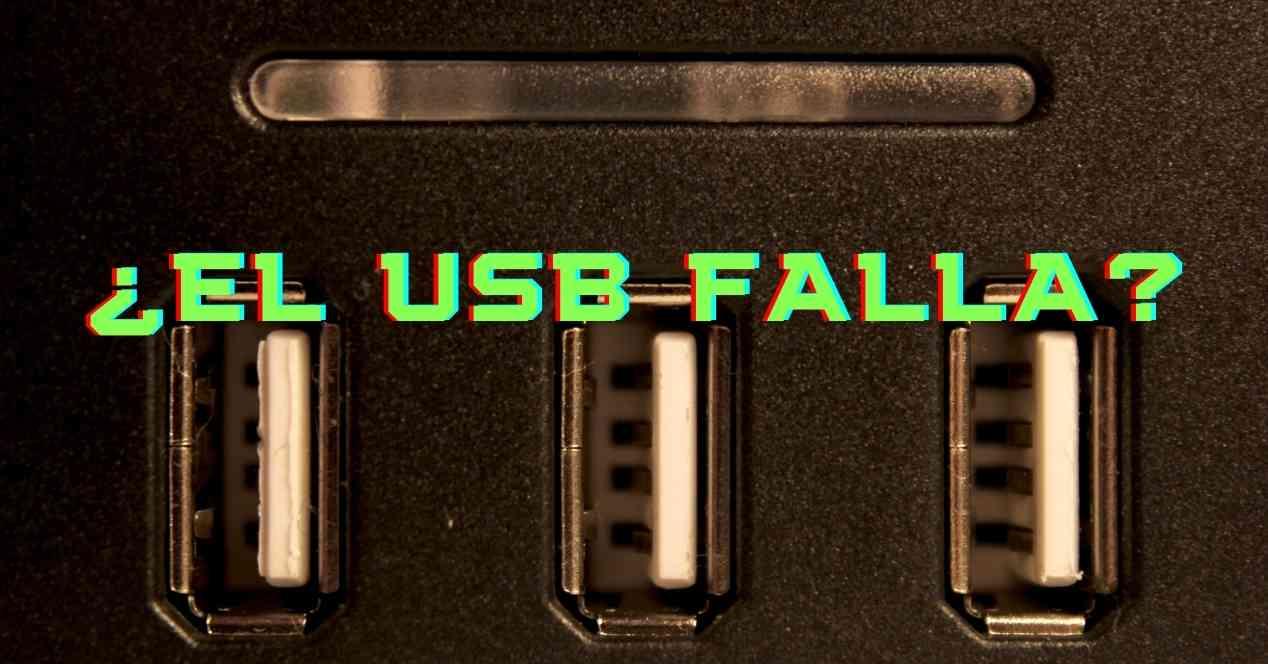The USB port, as its name suggests, has become the universal interface for many peripherals. Be it printers, headphones, printers, external storage drives. Of course, this universality also implies a high level of dependency. It is a type of port that, in all its variants, allows us to hot connect and disconnect peripherals. In addition to working on all types of platforms. But, What to do when the USB port does not work?
Computers today have a number of USB ports depending on the space left by the case. On desktop computers we can find huge amounts of them, on laptops they are more limited. All are handled through the USB controller which is usually found in the board’s chipset. Although there are exceptions and some processors have their own controller outside of the motherboard chip, as is the case with AMD. In any case, a general failure of this type of ports in unison is usually an electronic failure of the main PC board and, therefore, means having to change it or have it repaired if we are talking about a laptop.
How to troubleshoot if USB not working?
Sometimes a USB port fails and one of the most common faults is when the wiring traces stop making contact and require re-soldering. However, this is something the average user can’t do and we don’t recommend it if you don’t have experience with it. So we are going to give you some simpler tips. In any case a way to know that the port is faulty it’s when it connects and disconnects intermittently without us physically doing itif it’s our advice you have on hand a USB voltmeter to measure the electrical voltage and current of the port.
Restart computer if USB not working
This solution may be trivial, but it sometimes happens that the internal service of the operating system in charge of controlling the USB ports no longer works. It is therefore possible that despite the fact that the device has been physically connected and is working, we find that Windows, Linux or macOS completely ignore it. Record the work you do and restart your computer so that now, yes, it detects the device.
Periodically clean the USB port
It is completely normal that if we have nothing connected to a USB port, dust accumulates, so it is advisable to clean them periodically. You can do it with a compressed air spray in combination with interdental brushes dipped in isopropyl alcohol
Try another USB port
Whether on the same computer or on another PC, since the problem may not be with the port itself, but of the device or device we use. Same maybe the culprit is the cable. This is the most common type of failure, so it’s always good to have a spare set of cables tucked away in a drawer just in case.
Look at the motherboard connection
If you’re using a tower PC, chances are you have the USB hub or panel with its various ports connected to the motherboard. Well, the connector may have come loose. Below we leave you a photo of the type of connector you need to find and reconnect. More than anything due to the fact that its shape is different. Although many plaques will easily mark it for you, it never hurts to know.
Please note that USB type 3 or higher ports use a different motherboard connector as they require significantly more pins. In the pictures that accompany these lines you can see their differences.
Through Device Manager
Sometimes it happens that our beloved and hated Windows Device Manager gets silly. This is instead done by the operating system stopping detecting new devices, however, before restarting the computer, there is a way for the system to realize that a new device is connected.
Solo tenéis qu’hacer clic derecho en la raíz de la lista, en le icono qu’representa l’computer tal y como podéis ver en la imagen de arriba de estas líneas y seleccionar la única option que os sale para que renueve la lista de periféricos de conectar and ready. Keep in mind that if your device needs drivers, it will be detected as a generic device of the same type. In any case, it is 100% useful for generic USB devices such as keyboards or mice, for example.
Table of Contents









